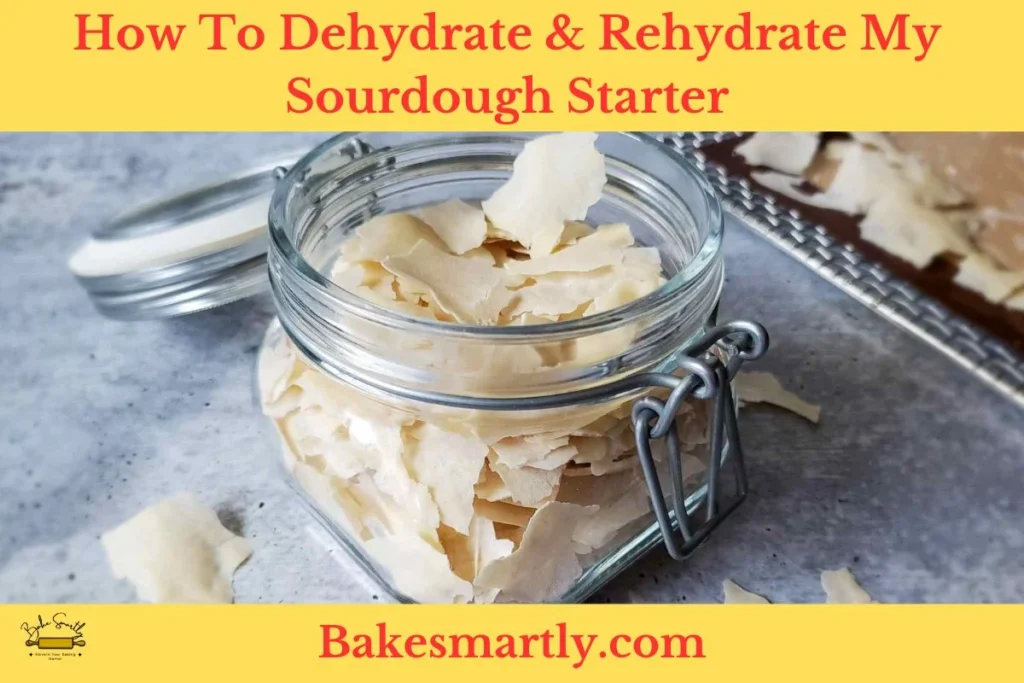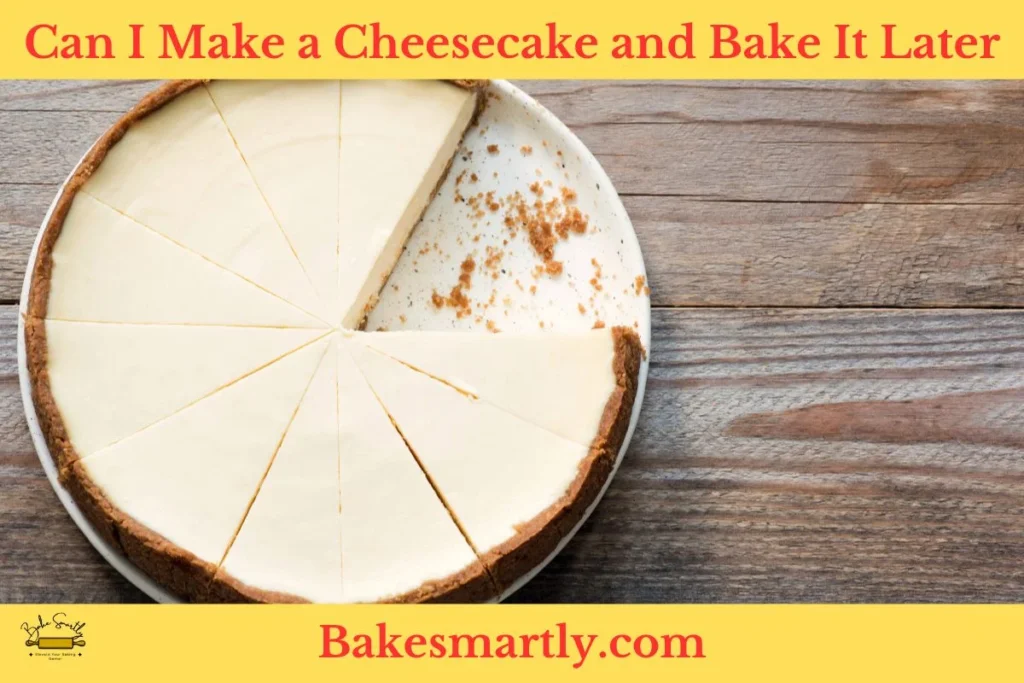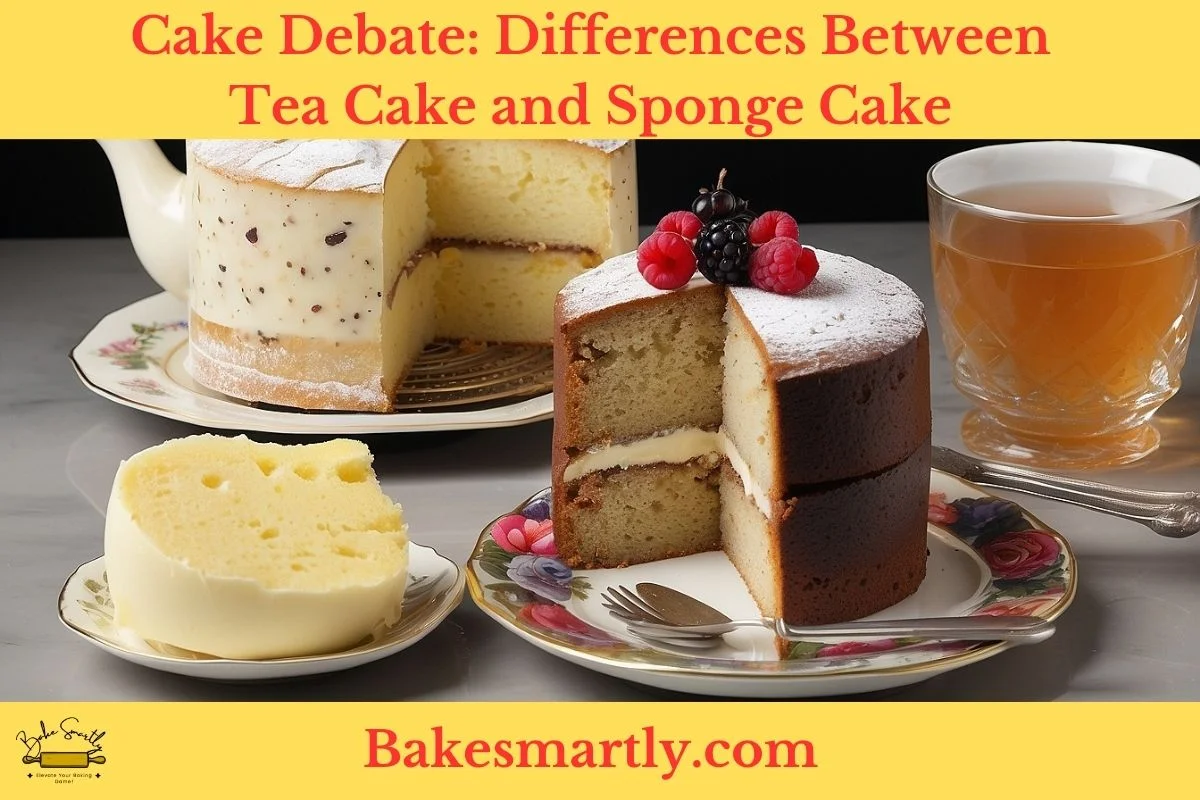
Cake Debate: Differences Between Tea Cake and Sponge Cake
Cakes have been a tasty part of baking traditions for ages, giving us a sweet break from the usual. Among the many types of cakes out there, two kinds often stir up discussions among baking fans and dessert lovers: tea cakes and sponge cakes.
In this article, we’ll dig into what makes each of them special, checking out where they come from, how they taste and feel, and why they matter in different cultures.
Table of Contents
ToggleIngredients and Preparation Methods of Tea Cake vs Sponge Cake
Tea cake and sponge cake are two tasty desserts with similarities, yet they also have differences in their ingredients and how they’re made. Both cakes belong to the world of baked goods, but each has its unique qualities that suit different tastes and occasions.
Tea Cake:
Tea cakes are known for being simple and versatile, perfect for a chill afternoon tea or a casual get-together. Traditional tea cakes include flour, sugar, butter, eggs, and a subtle touch of tea for flavor.
Unlike richer cakes, tea cakes are often crumbly, and the tea infusion gives them a mild and distinct flavor. You can also add things like dried fruits, nuts, or spices to amp up the taste and add a nice contrast to the soft crumb.
Making a tea cake usually involves mixing butter and sugar, adding eggs, and gradually folding in the dry ingredients. The use of tea, whether brewed or as an extract, gives the cake its unique character. Tea cakes bake for a shorter time than denser cakes, resulting in a lighter and more delicate dessert.
Sponge Cake:
Sponge cakes, on the flip side, are famous for their light and sponge-like texture. The main ingredients are flour, sugar, eggs, and sometimes a leavening agent like baking powder.
Unlike richer cakes, sponge cakes don’t have butter, which gives them a fluffy consistency. The rise of a sponge cake depends heavily on beating the eggs to incorporate air, creating a structure that can absorb flavors and moisture well.
Making a sponge cake involves carefully whipping eggs and sugar to add air, followed by gently folding in sifted flour. This precise process ensures the cake’s signature sponginess. Unlike tea cakes, sponge cakes can be layered and filled with creams, fruits, or jams, making them a versatile canvas for creative decorations and flavor combinations.
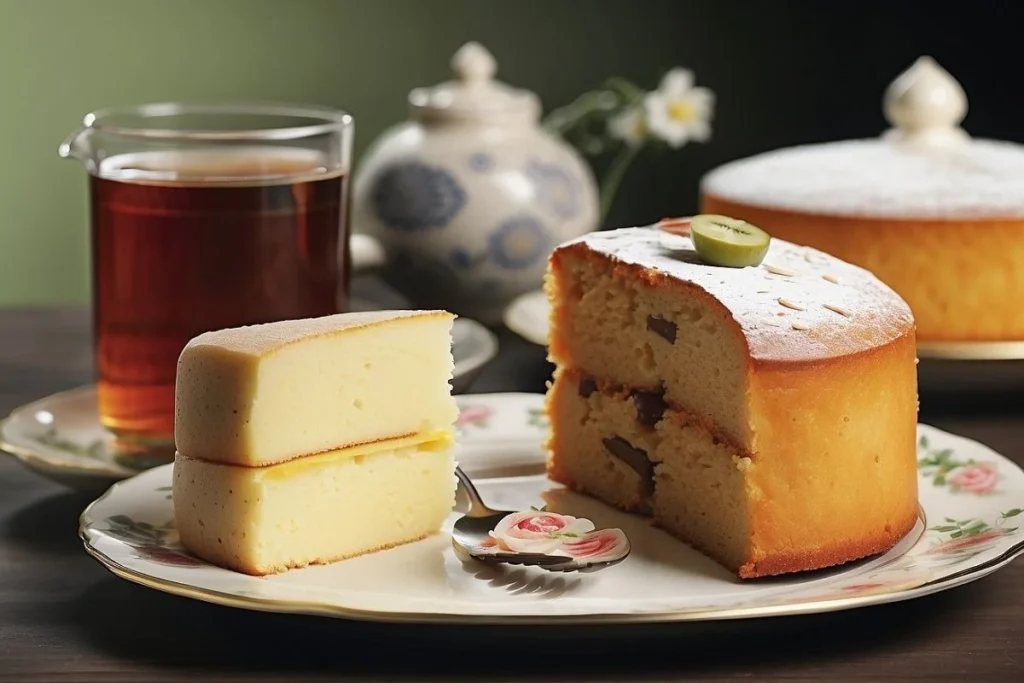
Texture and Taste Differences Between Tea Cake and Sponge Cake
Tea cakes and sponge cakes are both awesome, but they’ve got their own thing going on when it comes to how they feel and taste. These little details are what make munching on these treats so special.
Tea Cake Texture and Taste:
Tea cakes are all about being dense and moist, giving you a satisfying and hefty bite. The inside of a good tea cake is usually packed together, creating a nice, cozy feeling in your mouth that goes perfectly with a warm cup of tea.
The taste of tea cakes is sweet but not too overpowering, striking a nice balance. Whether you’re into the simplicity of a classic vanilla tea cake or the added twist of one with fruit, tea cakes always bring a sweet and substantial combo.
Sponge Cake Texture and Taste:
Now, sponge cakes are a whole different ball game. They’re light and airy, thanks to whipped-up eggs in the batter, making them practically melt in your mouth.
Sponge cakes are a bit sweet, but not too much, making them a blank canvas for all sorts of toppings, fillings, and frostings. Because they’re so airy, sponge cakes are great for layering, letting you mix and match flavors.
The differences in taste and texture between tea and sponge cakes come from a bunch of things. Stuff like how much of each ingredient you use, how long you bake it, and the way you mix everything up all play a big part.
Making tea cakes involves creaming butter and sugar, which gives them that denser texture. On the flip side, nailing the perfect sponge cake takes some skillful egg-whipping and precise folding techniques.
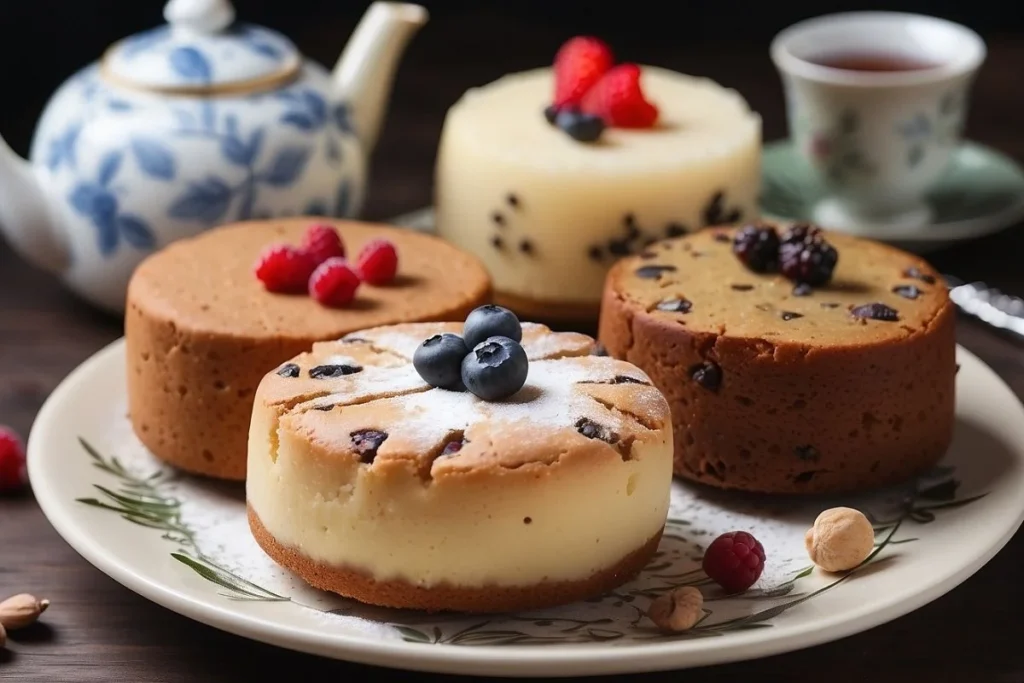
5 Popular Variations and Flavors of Tea Cake
Tea cakes are super versatile and let you play with all sorts of flavors. They’re loved by people all over the world. Let’s dive into five popular and tasty variations that show off the richness and creativity you can find in the world of tea cakes.
- Lemon Blueberry Blast: Kick the classic tea cake by mixing the tang of fresh lemons with the sweetness of juicy blueberries. Every bite is a flavor explosion, making it a hit for brunch or afternoon tea.
- Earl Grey Bliss: Take your taste buds on a fancy journey with tea cakes infused with the fragrant notes of Earl Grey tea. The subtle bergamot undertones add a touch of sophistication, making them the perfect match for a cup of Earl Grey tea.
- Chocolate Chip Delight: If you’ve got a sweet tooth, these tea cakes are a dream. Rich chocolate and buttery cake come together, and the gooey chocolate chips take them to the next level. A favorite treat for anyone with a dessert craving.
- Almond Raspberry Harmony: The nutty almond flavor mixed with the tartness of fresh raspberries creates a perfect balance of flavors. Not only do these tea cakes look good, but they also give you a delightful mix of tastes and textures.
- Coconut Mango Paradise: Take a trip to the tropics with coconut mango tea cakes. The sweet goodness of ripe mangoes blends perfectly with the subtle nutty flavor of coconut, giving you a slice of sunshine in every bite.

5 Popular Variations and Flavors of Sponge Cake
Sponge cakes are awesome because they’re light and fluffy, and you can do a bunch of cool stuff with them. People all over the place have come up with some really tasty twists on the classic sponge cake.
Check out these five popular versions that take sponge cake to the next level:
- Chocolate Swirl Sponge Cake: Mixing in some rich cocoa gives the sponge cake a chocolatey swirl. It’s like the perfect combo of the light sponge cake and the rich flavor of chocolate, especially for folks who love chocolate.
- Matcha Green Tea Sponge Cake: Jumping on the matcha trend, this sponge cake has a cool earthy taste. The slightly bitter matcha goes great with the sweet sponge, making it a treat for your taste buds.
- Raspberry Chiffon Cake: Throwing in fresh raspberries adds a burst of fruity goodness to the sponge cake. Making it chiffon-style makes it extra light, and the combo of the airy texture and the tartness of raspberries is a winner.
- Lemon Zest Infusion: Adding lemon zest to the batter gives the sponge cake a zesty kick. If you’re into refreshing citrus flavors, especially in the summer, this one’s for you.
- Coconut and Pineapple Delight: Imagine your taste buds on a tropical vacation with this sponge cake that mixes coconut and pineapple flavors. It’s a moist and flavorful cake that feels like you’re biting into a sunny island paradise.
Serving Suggestions and Occasions for Tea Cake vs Sponge Cake
When it comes to picking between tea cake and sponge cake, how and where you serve them can amp up the whole experience. Let’s check out the best places to enjoy these yummy treats.
Tea cakes are perfect for chill hangouts and laid-back moments. Imagine a comfy afternoon with friends, sipping tea and chatting away, with a slice of Earl Grey lavender loaf or classic lemon tea cake stealing the show. Paired with a hot cup of tea or coffee, these cakes create a friendly vibe, making them great for brunches and casual get-togethers.
On the other hand, sponge cakes are the stars at fancier events and celebrations. Their light and fluffy texture makes them excellent for fancy decorations, making them the go-to for birthdays, weddings, and anniversaries.
Whether it’s a rich chocolate swirl sponge cake or an elegant matcha green tea variation, the adaptability of sponge cakes means they can please a wide range of tastes.
Whether you go for the cozy simplicity of a tea cake or the classy feel of a sponge cake, think about the setting and the occasion. Tea cakes are perfect for close-knit gatherings, while sponge cakes bring a touch of elegance to big celebrations.
The choice comes down to the atmosphere you want and the memories you want to make with these tasty creations.
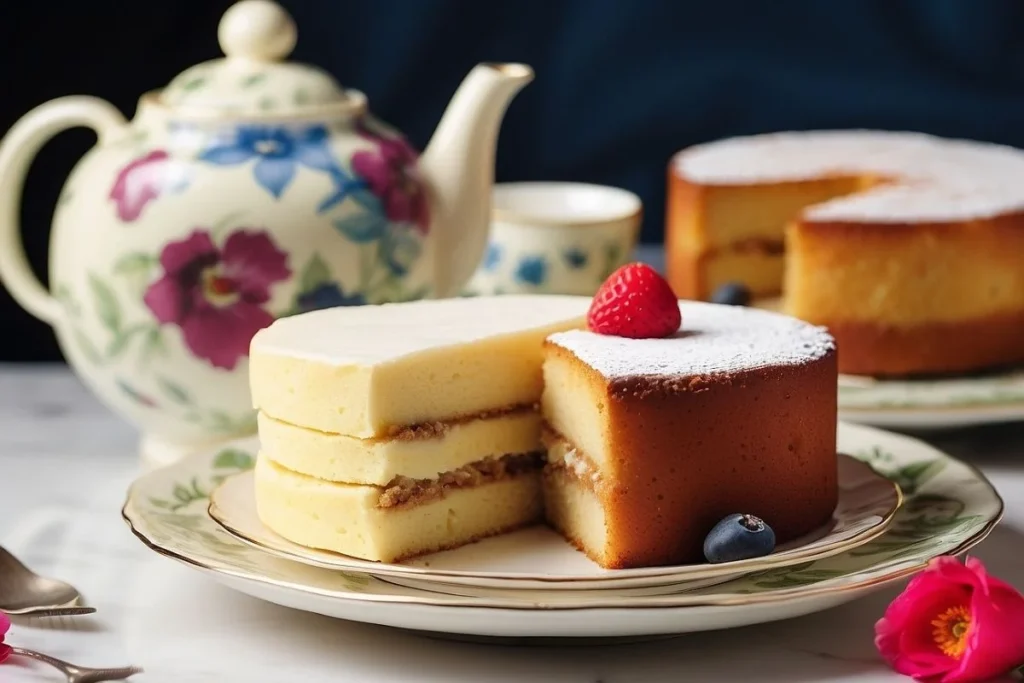
Which is Easier to Bake for a Beginner Baker: Sponge Cake or Tea Cake?
For people who are just starting to bake and diving into the world of baking, deciding whether to try making a sponge cake or a tea cake is a big deal. The ease of making each type depends on what you like, your skill level, and what you want the result to be.
Sponge cakes are known for being light and airy, and they might seem a bit scary for beginners because you have to be precise when beating the eggs to get that fluffy texture.
But, the simple ingredients and basic approach make them a great starting point for getting creative. If you pay close attention to how you beat the eggs and fold everything together, even beginners can get the hang of making sponge cakes and enjoy the satisfaction of a delicate, spongy result.
On the flip side, tea cakes have a denser texture and are often more forgiving for new bakers. The straightforward creaming method, where you mix butter and sugar, gives a solid base for experimenting. Beginners can easily try out different flavors and add-ins without dealing with the complexities of making a sponge cake.
In the end, the choice between the two comes down to personal preferences and how much of a challenge you’re up for. Whether you go for the light elegance of a sponge cake or the comforting simplicity of a tea cake, both are tasty options for anyone starting their baking adventure.
Differences Between Tea Cake and Sponge Cake | Final Thoughts
In conclusion, whether you’re into the comforting simplicity of tea cakes or the light elegance of sponge cakes, both desserts take you on a delightful baking adventure. The differences in ingredients, textures, and flavors make each one a unique treat suitable for various occasions.
Tea cakes, with their dense, moist texture and subtle sweetness, are perfect for casual get-togethers and relaxed moments. They show off their versatility with options like Lemon Blueberry Blast or Coconut Mango Paradise, adding richness and creativity to this timeless classic.
On the flip side, sponge cakes, famous for their airy texture, steal the spotlight at more formal celebrations. Whether it’s a Chocolate Swirl Sponge Cake or a Matcha Green Tea Sponge Cake, they serve as a blank canvas for creative decorations and are a hit at birthdays, weddings, and anniversaries.
For beginners stepping into the baking world, choosing between tea cake and sponge cake depends on personal preferences and the challenge level you’re up for.
While sponge cakes might seem a bit daunting due to their precision, their simplicity and basic approach make them an exciting starting point. Tea cakes, with their forgiving nature and straightforward method, provide a solid foundation for experimentation.
Ultimately, whether you’re enjoying a cozy afternoon with tea and a slice of tea cake or marking a special occasion with a light and fluffy sponge cake, the joy of baking lies in the journey and the memories created with these delicious treats.
Lindsey Mackenzie
About me
Hi there! I’m Lindsey Mackenzie, the founder of Bake Smartly. Baking has been my passion since childhood, growing up in my father’s bakery. With Bake Smartly, I’m excited to share my love for all things sweet and savory. Join me on this delicious journey as we whip up scrumptious treats and sprinkle joy into every bite!

